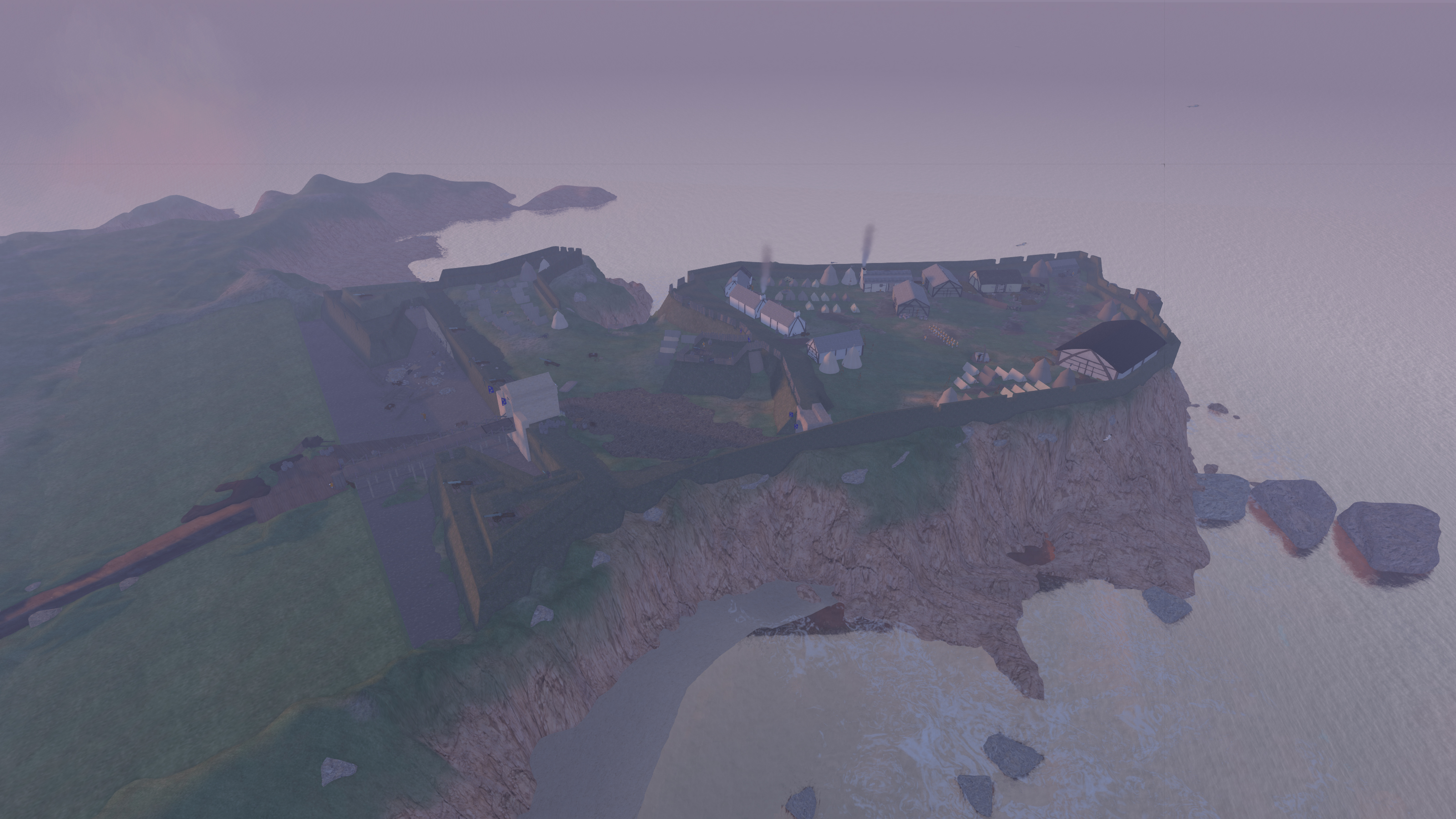Visiting the headland overlooking the fishing town of Eyemouth today, it is hard to imagine that this was once one of the most influential forts in Britain, a place that helped shape the history of the nation. On the ground are enormous banks and ditches cthat once belonged to two separate forts, and it is from the air that you get the best view of the fortifications.
Aerial view of Eyemouth (click and drag mouse to look around).
Eyemouth Fort was built during the ‘Rough Wooing’ – a time of warfare between Scotland and England which resulted from Henry VIII attempting to coerce the infant Mary (later Queen of Scots) into marriage with his young son Edward. Where political negotiation had failed, he hoped that military persuasion would succeed, and in 1543, the English army crossed the border. In 1547, his army constructed a new type of fort, using the latest in military innovation from the continent. Eyemouth was probably the first fort in Britain to employ the technique known as Trace Italienne, where thick earth walls were built to absorb the power of cannon fire and a protruding angular bastion was added to allow defenders of the fort to see enemies approaching from every direction.
View from the top of Kings Mount (click and drag mouse to look around).
The Rough Wooing was not a success, and rather than marry the English Prince, Mary was betrothed to the French Dauphin, Francis, in 1548. The English abandoned Eyemouth Fort in 1550, but by 1557, the French started to improve upon the English design, adding a second, outer defensive line. This consisted of deep ditch and high bank with a bastion at either end.
Some believe that the construction of the Elizabethan fortifications at Berwick upon Tweed was as a direct result of having the powerful Eyemouth Fort so close to the English border. There is no doubt that Eyemouth was a cause for concern, and the new English monarch, Elizabeth I, was relieved when a treaty saw Eyemouth abandoned by the French before they were able to complete all of the buildings.
View inside the fort (click and drag mouse to look around).
Today, although parts of the fort are falling into the sea as the sandstone cliffs crumble, the massive defences are still an impressive sight. The Friends of Eyemouth Fort are working to bring the fort to the attention it deserves. To make the reconstruction, we have worked with the Friends, using aerial photographs taken from plane and hexakopter, which have been stitched together to make a 3D model.
The content describing life at the time of the Fort has been created from the findings of the rescue archaeological work undertaken by David Caldwell, and historical research.
To see the web version of the Eyemouth Fort model – download the viewer.
To see the full version of the model, and to see the actual fort and artefacts, visit the Eyemouth Museum in Eyemouth, Scottish Borders.

